Yes, remote learning can work for preschoolers
The largest-ever humanitarian intervention in early childhood education shows that remote learning can produce results comparable to a year of in-person teaching.
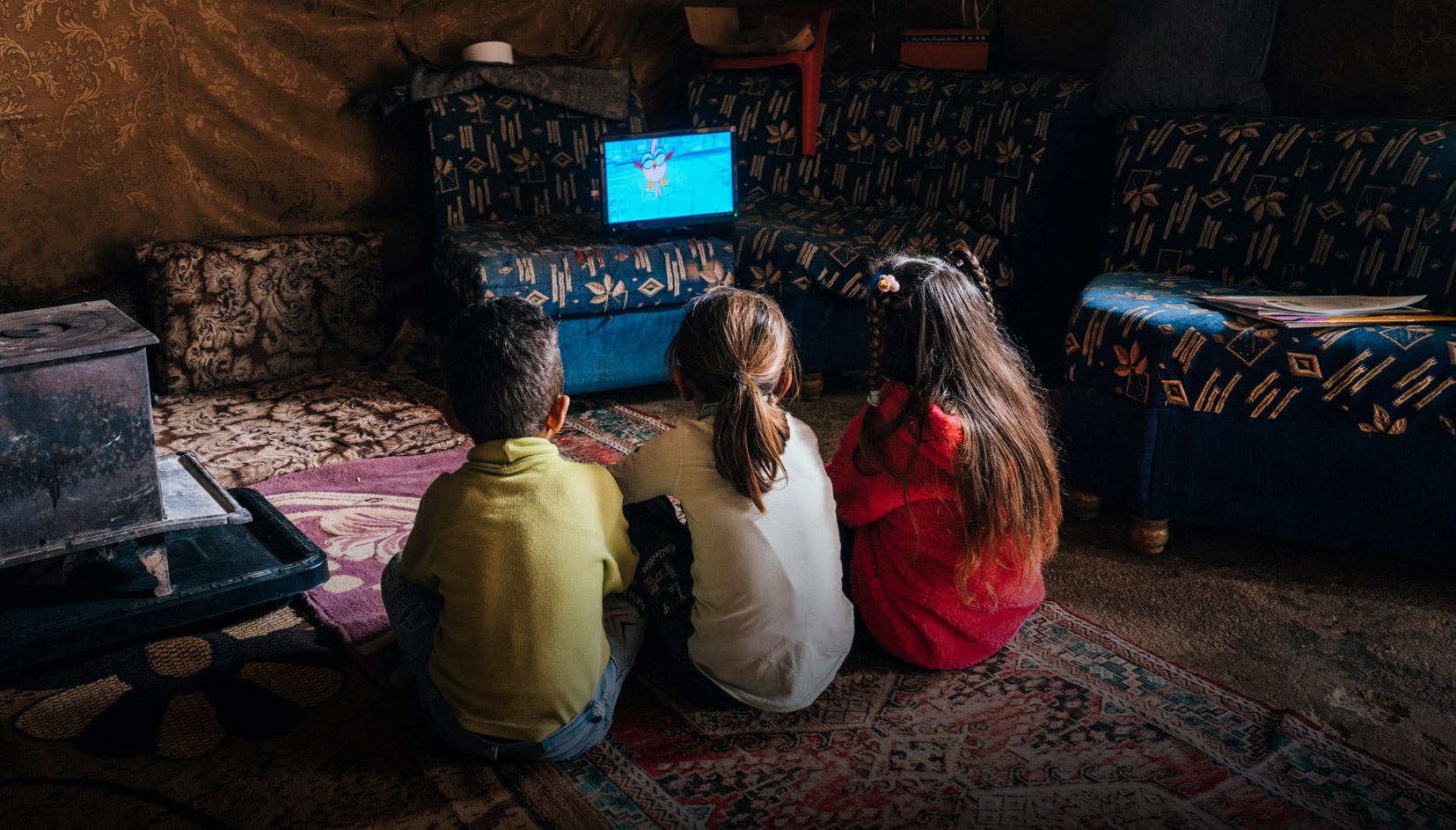
The other day some preschoolers were pretending to be one of their favorite Sesame Street characters, a baby goat named Ma’zooza who likes round things. They played with tomatoes—counting up to five, hiding one, and putting it back.
A totally ordinary moment exploring shapes, numbers, and imagination. Except this version of Sesame Street—called Ahlan Simsim (Welcome Sesame)—was custom made for children like these: Syrian refugees living in camps in Lebanon who otherwise don’t have access to preschool or, often, enough to eat.
Educational interruptions due to the pandemic, climate disasters, and war have affected nearly every child on Earth since 2020. A record 43.3 million children have been driven from their homes by conflict and disasters, according to UNICEF—a number that doubled over the past decade.
And yet, points out Sherrie Westin, the head of the nonprofit that produces Sesame Street, “less than 2% of humanitarian aid worldwide goes to the early years”—that is, specifically supporting care and education, not just food and medicine.
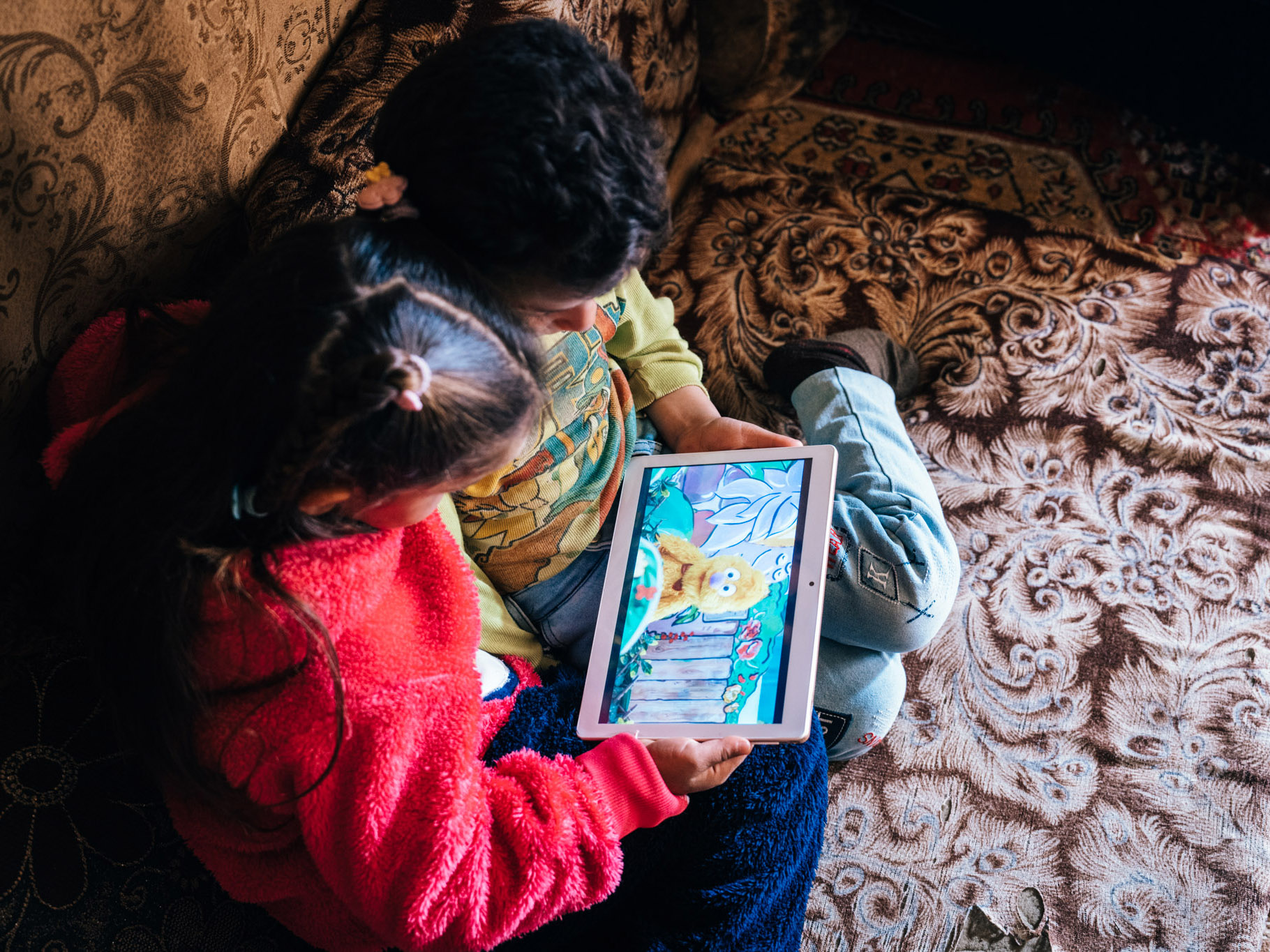
That may be about to change. The Ahlan Simsim program is the largest-ever humanitarian intervention specifically intended for small children’s development. Sesame Workshop partnered with the International Rescue Committee, a humanitarian-aid nonprofit, to win a $100 million grant competition administered by the MacArthur Foundation. The results, released in May 2023 but not yet peer reviewed, have been startling: they have provided the first evidence that 100% remote learning can help young children in crisis situations. And the format has already been successfully copied and used in other crises.
The program combines video content produced by Sesame with services from the IRC, which employs a combination of volunteers from the affected community and professional teachers and parent educators to work locally with families. Over the past few years, 2 million children and their caregivers watched Ahlan Simsim and received coordinated services, some of which were provided entirely over mobile phones. Another 25 million simply watched the show.
In 2023, Hiro Yoshikawa and his team of researchers at New York University showed in a randomized controlled trial that Syrian refugee children taking part in an 11-week, fully remote learning program, combining Ahlan Simsim videos with live support from local preschool teachers over cell phones, showed progress in learning that was comparable to the results from a year of standard in-person preschool.
And the learning they measured wasn’t just academic. Children made progress in overall development, emerging literacy, emerging numeracy, motor skills, social-emotional skills, and even the quality of play—like pretending to be Ma’zooza the goat.
“I’m pretty impressed,” says Kathy Hirsh-Pasek, an expert in early child development at Temple University, who was not involved with the research. Compared with in-person preschool, “this is probably not the full nutritional value,” she cautions. “But nicely done—to even bring them anything in this setting is kind of amazing.”
Sesame and IRC hope that holistic intervention can help the world’s most vulnerable kids cope with toxic stress—the kind that can, if unchecked, change the architecture of a developing brain. “We see so many children that just because of the circumstances of their birth—born into crisis, into conflict—the odds of them achieving their full potential are reduced,” says Katie Murphy, the director of early-childhood development and strategic initiatives at the IRC, who was closely involved with the project. “Our work tries to reduce that gap.”
With the right support from caregivers and communities, Murphy and her colleagues believe, more children around the world can grow up resilient amid crisis, displacement, and war.
Coping with discrimination, conflict, and hunger
At a refugee camp in the agricultural Beqaa Valley in eastern Lebanon, Amal, Hana, and Mariam, three Syrian refugee mothers who participated in the program, sat on a carpet in a nearly empty tent, wearing headscarves and patterned robes. Hana’s four-year-old son reclined on her lap. There had been a recent security incident at their home camp, so we Zoomed from a neighboring camp.
As the economic crisis worsens here, the mothers I spoke with reported feeling growing resentment and sometimes discrimination from their Lebanese neighbors. They said they are nervous just using their UNHCR aid cards—which mark them as refugees—to buy food at the supermarket. And their kids are sometimes bullied as well.
“There are children who are saying ‘Oh, you are Syrian,’ and they want to fight with them,” Sou’ad, a refugee with four children under seven who also volunteers for the IRC, told me through an interpreter in a separate interview. “The sense of belonging is needed. The children don’t know which country they belong to—to Lebanon or to Syria. They say, ‘This is not our country—this is the country of these other children, so that’s why they are fighting us.’”
Syrians are the largest displaced population in the world. Seven out of 10 fled or were forced from their homes at the outbreak of the civil war in 2011. The women I’ve spoken with have been here for around a decade; their children were born in Lebanon, but they aren’t permanent residents and have no path to citizenship.
In August 2020, a giant explosion at the port of Beirut complicated and worsened Lebanon’s brutal economic and political crisis. The country is currently without a president, and tensions have only increased with the Israel-Hamas war. As of October 2023, one-fourth of Lebanon’s population was food insecure, including 36% of Syrian refugees.
These days, the mothers at the camp tell me, there isn’t enough money even to give the children milk or labne, the local variation of yogurt; they say they have only rice, pita, and a little za’atar spice to sprinkle on top. Children as young as eight are going to work in the fields for food.
Pivoting under pressure
When the pandemic hit, the remote-schooling intervention in Lebanon had to be redesigned from scratch. The original plan was that IRC would provide in-person preschool, and Sesame would create complementary TV episodes and short videos featuring Ma’zooza the goat alongside Jad, a yellow monster, and Basma, his purple friend. But in early 2020, when schools around the world had to go remote, the project did too.
Remote-learning programs during disaster and war are nothing new. During World War II, BBC School Radio broadcast lessons to up to half the students in Britain. But the advent of mobile 4G and 5G networks around the world has presented whole new opportunities for learning in crises. Russia’s invasion of Ukraine in 2022 created one of the biggest and fastest displacements of families in history; Ukraine declared just a two-week school holiday before resuming public education online, with many students joining in on mobile phones from across the country and around the world.
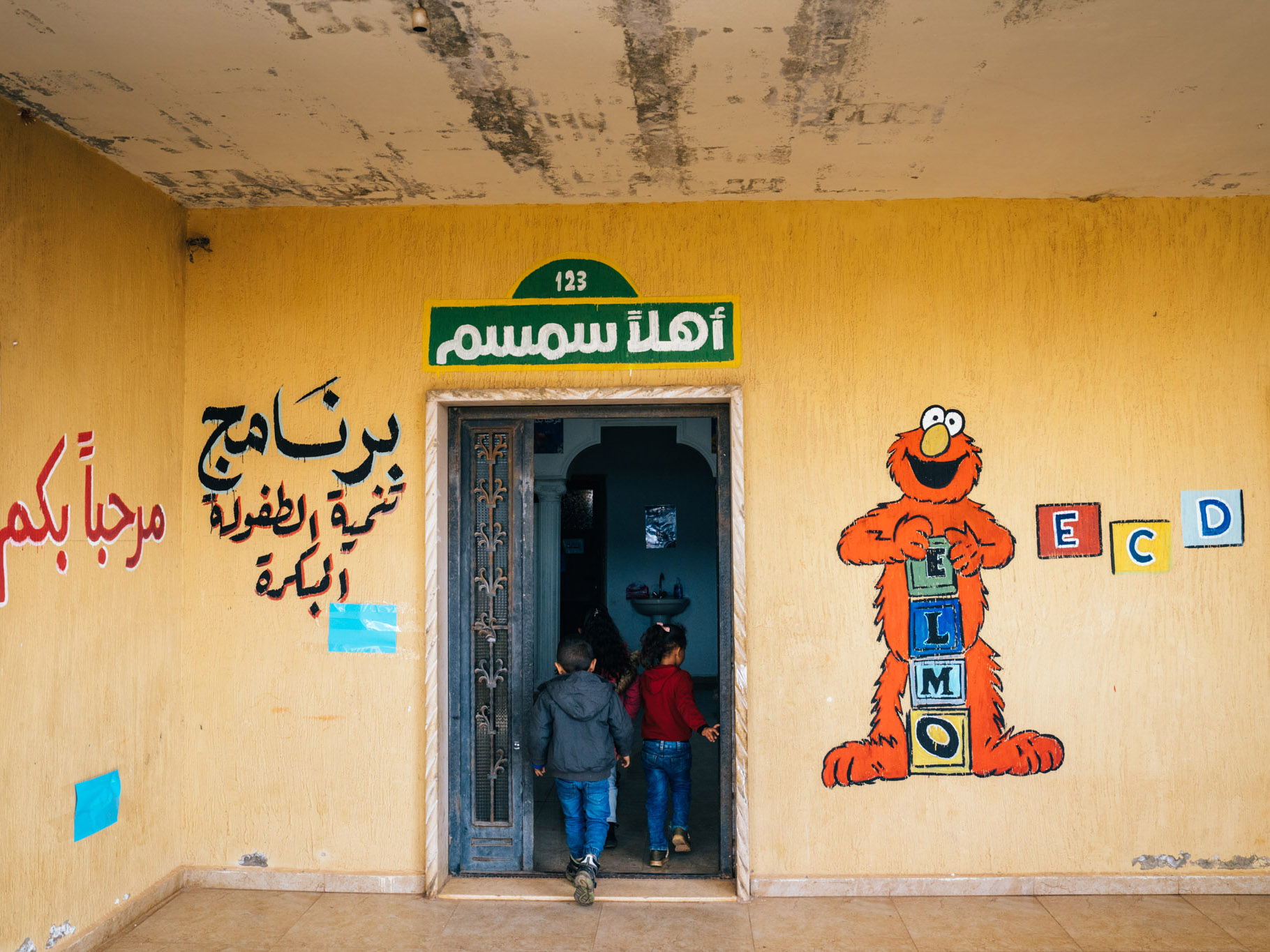
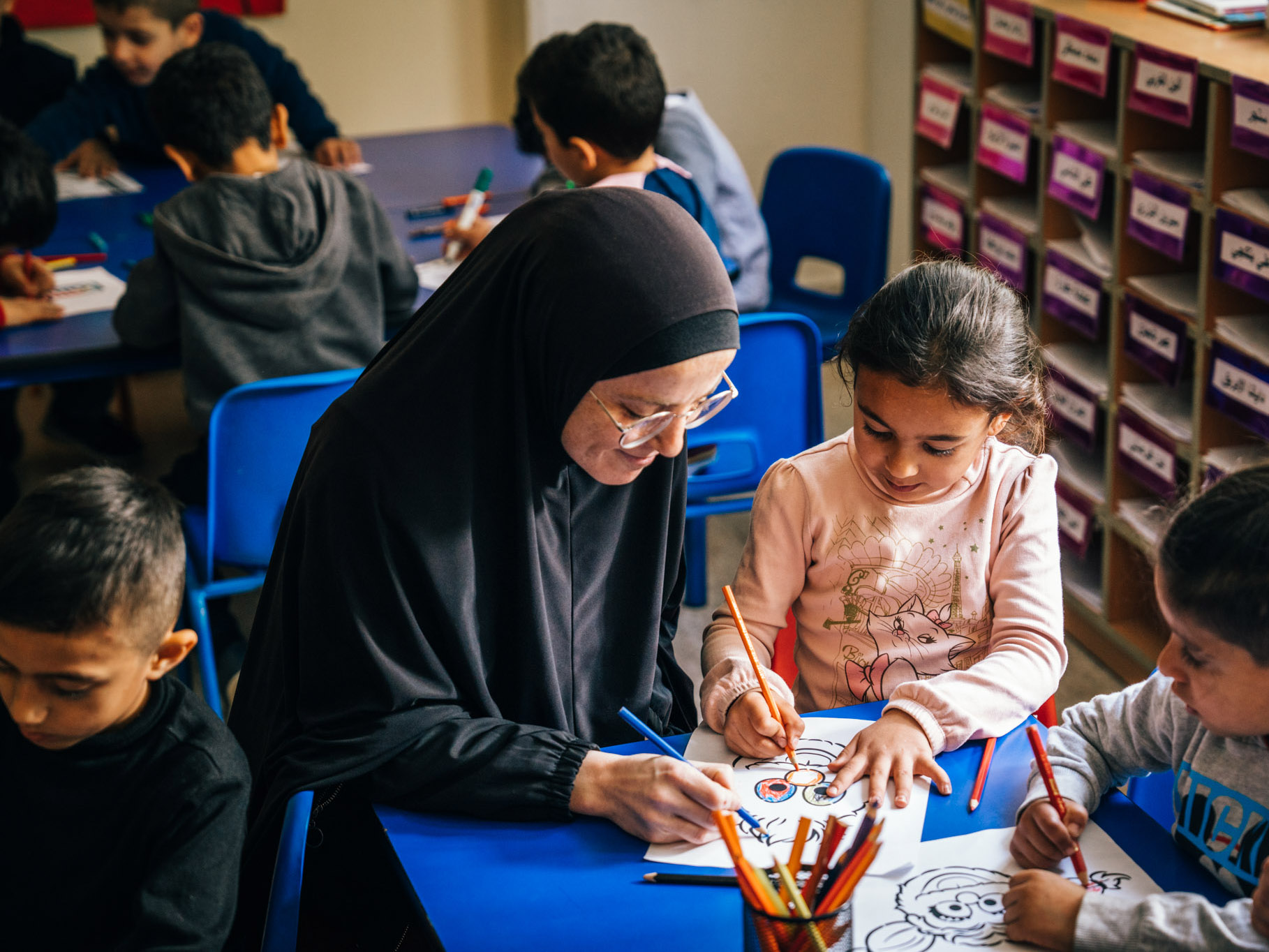
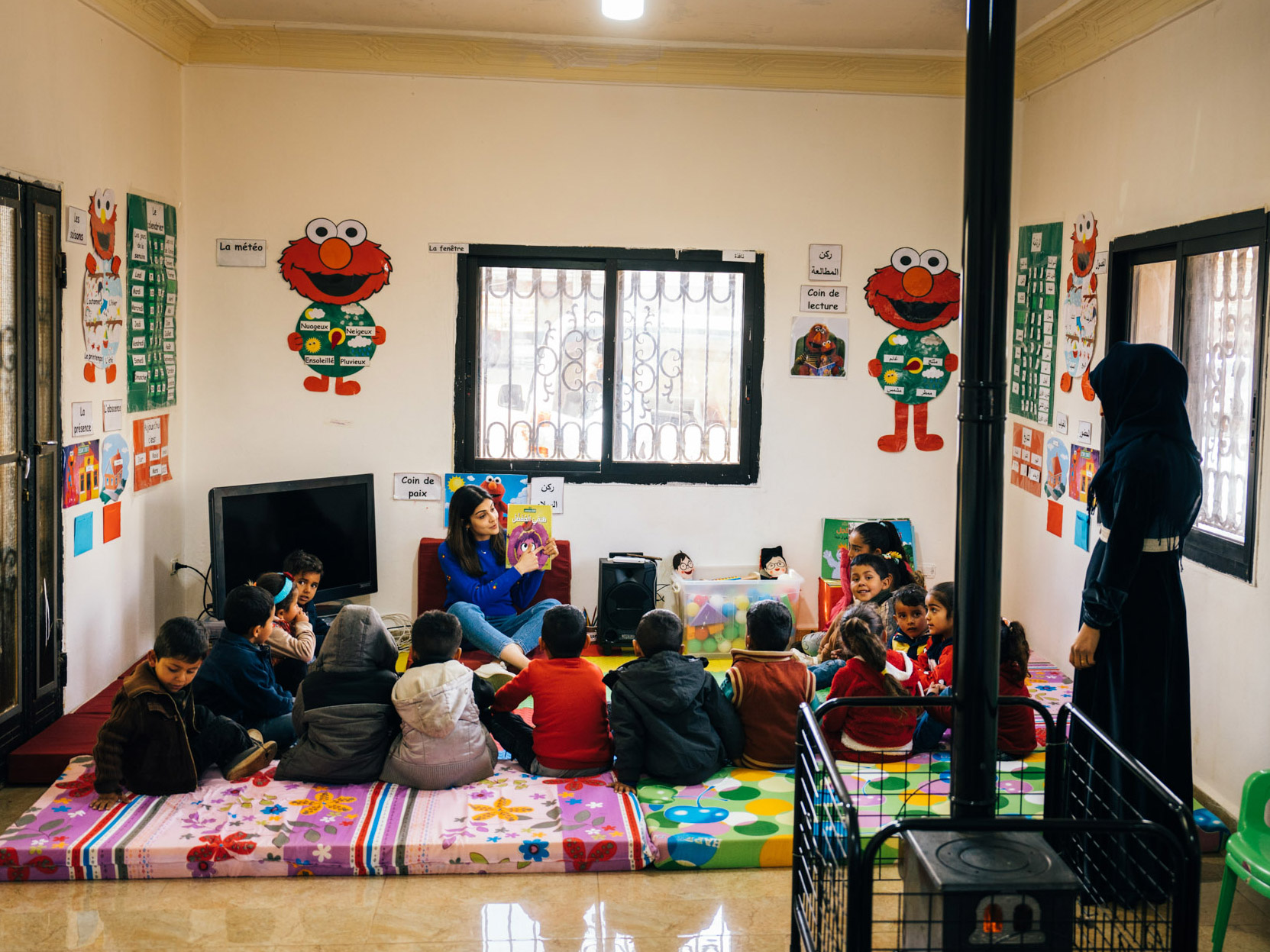
After covid lockdowns ended, the International Rescue Committee and Sesame resumed their in-person preschool program, where Lebanese children learned alongside Syrian refugees.
But that’s a tall order in Lebanon, where telecommunications infrastructure and the power grid have deteriorated along with the economic situation. As of January 2021, about two-thirds of the population had a mobile connection and 78% were internet users, according to Datareportal. The Syrian refugees reached by IRC programming typically had one prepaid mobile phone per household; the group gave them recharge cards to cover their data services.
Nevertheless, the approach was “extraordinarily successful,” says Yoshikawa, the lead researcher in the study. He points to the unusual level of commitment from family members, primarily mothers, who took time out of their household duties for a rare and prized opportunity to focus on their children’s learning. “When we interviewed the caregivers,” he says, “they really perceived this as the chance to have full access to preschool, which Syrian refugee families typically don’t have.”
Preschool teachers dropped off basic writing materials and art supplies. They called groups of five or six families at home three times a week. In these calls, they spent about five minutes greeting and engaging the children directly, and the rest of the time instructing caregivers on how to convey lessons and lead activities with the children. Families could message the teachers, as well as each other, for support. And families would send videos back to the teachers via WhatsApp, documenting what the children had practiced.
Caregivers reported going up to their roof for a better signal. They charged smartphones at neighbors’ homes when the power went out, and when they ran out of data they borrowed phones from extended family members so the children could keep watching assigned videos.
More than a third of the mothers were illiterate, so often the teachers would have to show them how to write basic letters to teach their children, or send them voice memos if they couldn’t read messages. “We were empowering them both,” says Awada, one of the teachers.
“That interaction with their children, I believe, was one of the reasons the study’s results were so powerful,” says Westin.
Dima, a refugee and mother of three who also works as an outreach volunteer with the IRC, helps recruit and support families to engage with the Ahlan Simsim program. She says most children had no previous access to the sort of educational materials provided—things like scissors, tape, and crayons. The IRC also distributed necessities like soap, lice medicine, and toothbrushes.
Mariam, one of the mothers in the camp, has two girls, five and four years old, and her greatest wish is that they get an education. She herself stopped her schooling at the sixth grade. “Reading and writing,” she said through an interpreter, “is the most important thing in life.”
A focus on resilience
Sesame Street premiered in the United States in 1969 with a social mission born out of the civil rights movement and President Lyndon Johnson’s Great Society: to level the playing field for poor kids by bringing early learning into the home for free.
The show debuted its first foreign-language co-productions in Brazil and Mexico just three years later; there have been a total of 42 international co-productions over the years. A meta-analysis of studies with over 10,000 children in 15 countries found that these programs have had significant positive effects on children’s mastery of reading and basic math concepts, as well as their social-emotional skills and attitudes toward out-groups.
An Arabic version of the show (Iftah Ya Simsim/Open Sesame, which many of today’s parents in the region grew up with) ran from 1979 to 1989. But Ahlan Simsim is the first production created deliberately for children affected by crisis and conflict, and that necessitated some special sensitivity.
The social-emotional curriculum for the show had to be designed from scratch for the cultural context and needs of these children, says Shanna Kohn, the director of international education at Sesame Workshop. “We went in with the idea of a show that focused on resilience—a beloved Western concept. And we brought that to this team of academics and Arab advisors, and there was a lot of skepticism. There isn’t even a clear Arabic translation,” says Kohn.
So the team backed up and started with the basics. They had to figure out how to present relatable stories—about Jad leaving home and feeling different from his friends—without introducing situations or concepts that might be triggering for young viewers.
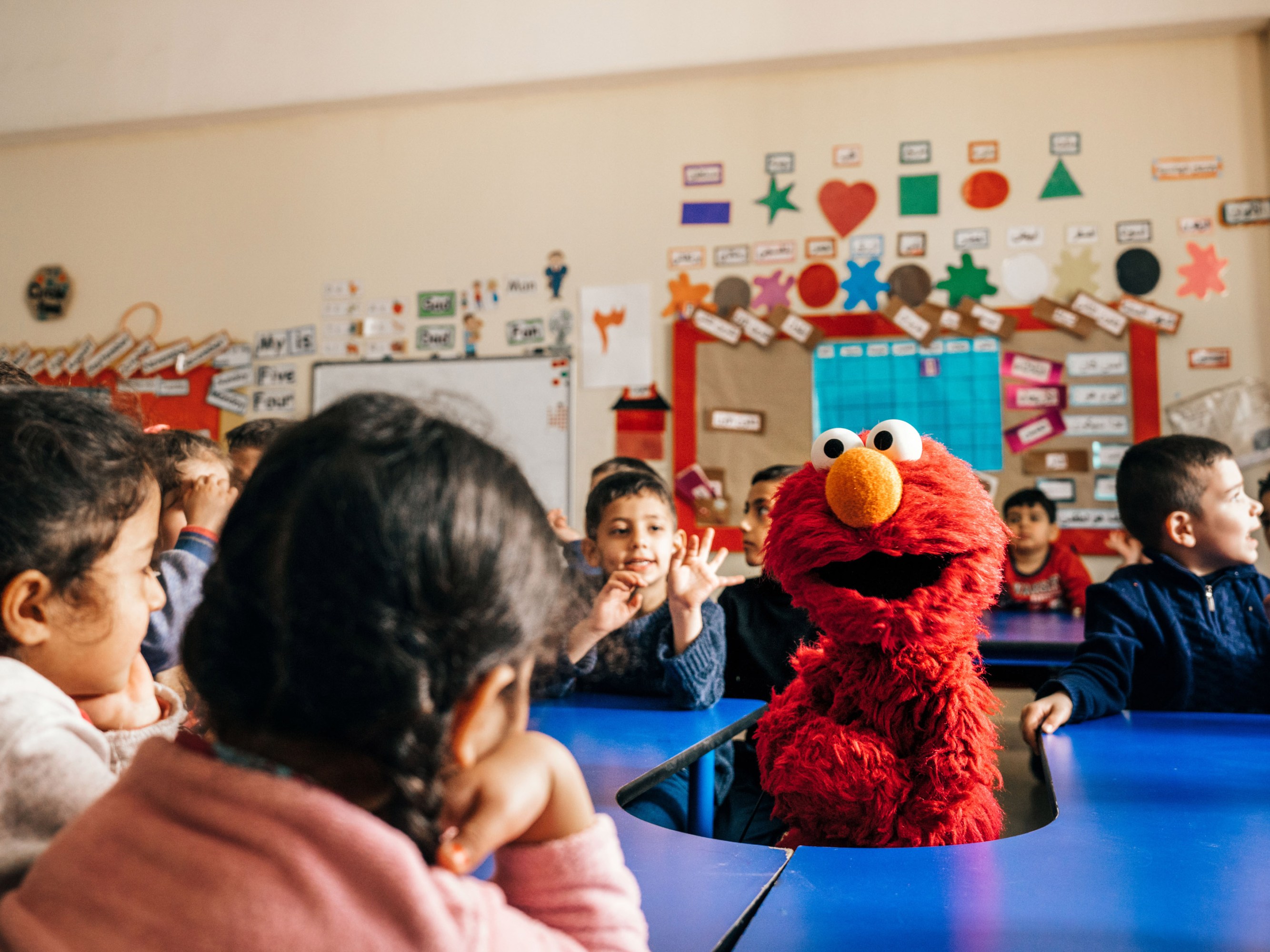
“Boats are usually a go-to for preschool children,” says Scott Cameron, who has been with the company for 25 years. “We avoided things like that, for obvious reasons.” They also avoided loud noises, like thunderstorms. They skipped nutrition lessons, because kids who are barely getting enough to eat can’t use reminders about fruits and vegetables.
Kids who are traumatized often respond with an outward numbness; the research team found that the children were using only two or three terms—happy, sad, angry—to describe their feelings. To help them process these feelings and frustrations, the show defines the Arabic words for nine emotions: caring, fear, frustration, nervousness, hope or determination, jealousy, loneliness, and sadness. Jad and Basma model emotional coping strategies: belly breathing, counting to five, “moving it out,” “drawing it out,” asking for help, and making a plan.
Sesame and the IRC are hoping that the evidence from this study becomes a mandate. The Lego Foundation supported a version of Ahlan Simsim for Rohingya refugees in Bangladesh. Sesame and the IRC have piloted the remote preschool program in Iraq and hope to scale it in that country, where there aren’t resources for in-person preschool.
And they adapted some of the video content for rapid response to 2023’s floods in Libya and earthquake in Morocco. Westin’s hope is that the world will begin to see both the need and the opportunity. “Those who have the most to lose,” she says, “receive the least and have the most to gain if we can reach them with nurturing care and growth.”
Anya Kamenetz is a freelance education reporter who writes the Substack newsletter The Golden Hour.
Deep Dive
Policy
Is there anything more fascinating than a hidden world?
Some hidden worlds--whether in space, deep in the ocean, or in the form of waves or microbes--remain stubbornly unseen. Here's how technology is being used to reveal them.
A brief, weird history of brainwashing
L. Ron Hubbard, Operation Midnight Climax, and stochastic terrorism—the race for mind control changed America forever.
What Luddites can teach us about resisting an automated future
Opposing technology isn’t antithetical to progress.
Africa’s push to regulate AI starts now
AI is expanding across the continent and new policies are taking shape. But poor digital infrastructure and regulatory bottlenecks could slow adoption.
Stay connected
Get the latest updates from
MIT Technology Review
Discover special offers, top stories, upcoming events, and more.